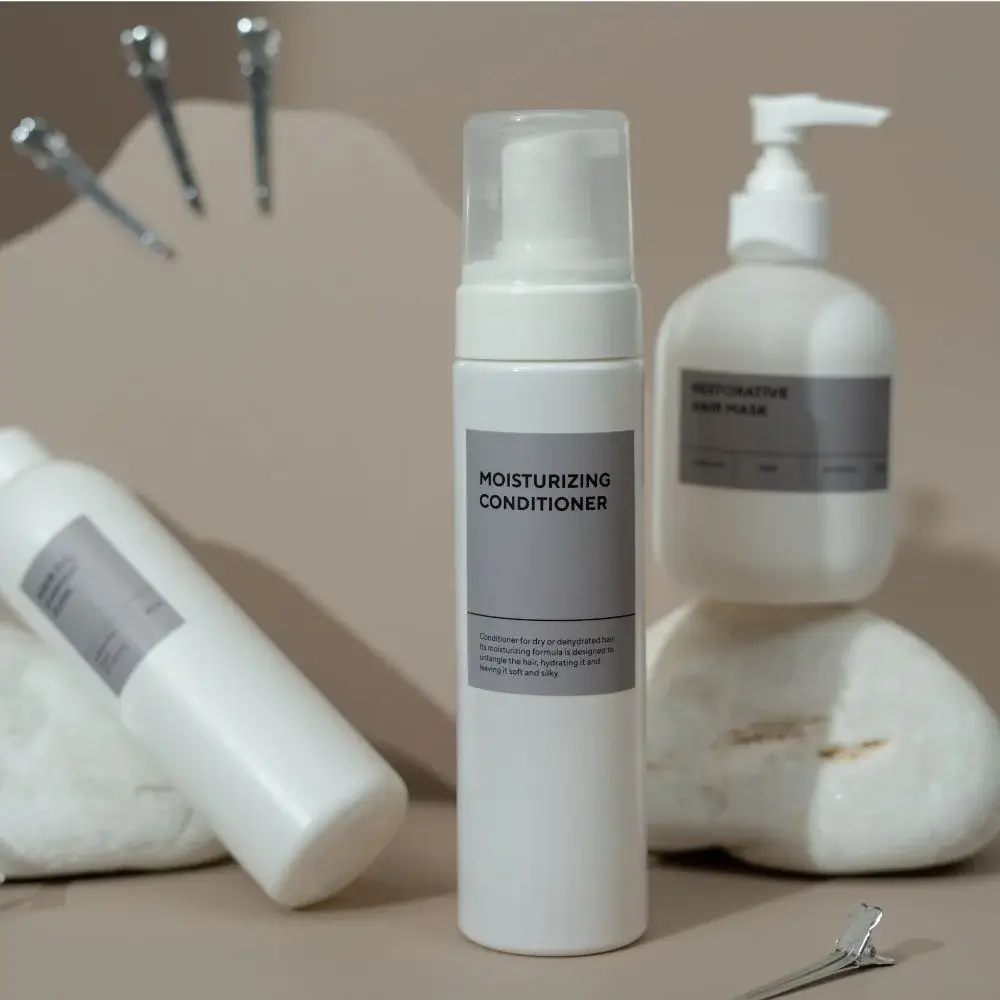Wigs are a great way to switch up your look or achieve a perfect style easily. However, like regular hair, wigs require proper maintenance to maintain luster and quality. Conditioning is one essential step you should never forget in hair care, but when it comes to wig care, can you use regular conditioner? Can you use any conditioner on a wig? In this blog post, we will clear up these questions and help you understand wig conditioning better.
Wig Material:
The first thing you should consider before conditioning your wig with regular or any conditioner is the material. Wigs are made of different materials, such as synthetic, human hair, or a blend of both. Synthetic wigs require specific care to maintain quality, and conditioning is not recommended. On the other hand, human hair and blended wigs need the same care as your natural hair. You can use regular hair conditioners on your human hair or blended wigs, but check the ingredients before using them.
Conditioner ingredients:
Not all conditioners are created equal; some contain ingredients that can damage your wig. For instance, avoid conditioners with alcohol, sulfates, and other harsh chemicals. Alcohol-based conditioners can dry out the wig strands, making them brittle and susceptible to breakage. Sulfates can strip the wig's natural oils, making it dull. Instead, opt for silicone-free and moisturizing conditioners that nourish and help retain your wig's natural oils.
Application method:
How you apply the conditioner also plays a vital role in maintaining your wig's quality. Ensure the wig is clean and dry before applying any conditioner. You can apply the conditioner either by hand or using a spray bottle. If you use a spray bottle, ensure the conditioner is well mixed with water. Apply the conditioner to the hair ends, working your way up to the roots. After applying the conditioner, allow it to sit for a few minutes before rinsing.
Frequency:
How often you condition your wig also matters in maintaining its quality. Over-conditioning can leave the wig feeling greasy and weighed down while under-conditioning can make it dull and frizzy. Depending on how often you wear the wig and your lifestyle, you can condition your wig once every two weeks or as needed. Don't forget to follow the wig manufacturer's instructions on conditioning your wig.
Alternative treatments:
If you are unsure about using regular conditioners on your wig or want a more natural approach, several alternative treatments can help condition your wig. One of the most common ones is apple cider vinegar treatment. Mix equal parts of apple cider vinegar and water and apply to your wig after washing. Allow it to sit for 10-15 minutes before rinsing. This treatment helps remove build-up and condition your wig naturally.
Can you use regular conditioners on your wig? The answer is yes but with caution. Consider your wig material and conditioner ingredients before using any conditioner. Always check the ingredients and avoid harsh ones that can dry out the wig strands. The application method and frequency of conditioning also play a vital role in maintaining your wig's luster and quality. Don't hesitate to try alternative treatments to keep your wig in its best condition, like apple cider vinegar treatment. With proper conditioning, your wig will look and feel great for a long time.
Say goodbye to tangled, curly, and lifeless wigs with the best conditioner for wigs that we have specially researched for you. We understand the importance of keeping your wigs looking fabulous, so we have scoured the market to find you the conditioner that will leave your wigs looking and feeling refreshed, soft, and silky. Our chosen conditioner has proven to work wonders on synthetic and human hair wigs, making it the perfect all-rounder. So, whether you're a wig enthusiast or a beginner, we guarantee that this conditioner will take your wig game to the next level. So what are you waiting for? Click the link and discover your next favorite conditioner for wigs today!
What is the best way to detangle a wig before applying conditioner?
To ensure your wig remains in top condition, it's crucial to detangle it properly before applying conditioner. Start by gently combing the wig using a wide-toothed wig comb or brush. Begin at the tips and work your way up to the roots, gently moving downward. Be patient, especially if you have a curly or textured wig, as these tend to tangle more easily. Taking time during this step prevents damage and ensures that the conditioner is distributed evenly, resulting in a smoother, more manageable wig overall.

What precautions should I take when using a leave-in conditioner on a wig?
Using a leave-in conditioner on a wig demands some precautions to maintain its optimal appearance and condition. First and foremost, avoid applying excessive product, as this can lead to buildup and make the wig appear greasy. Instead, apply a modest quantity evenly, focusing primarily on the ends while avoiding the wig's base. Besides, selecting a lightweight, specially formulated leave-in conditioner designed for wigs is advisable to preserve their natural look and prevent potential damage.

What is the recommended process for deep conditioning a wig?
Deep conditioning is crucial to wig maintenance, particularly for human hair wigs. To perform this effectively, generously apply a high-quality wig conditioner throughout the length, ensuring every strand is adequately covered. Then, place the wig inside a sealed plastic bag or wrap it in plastic. This creates a heat-trapping effect, allowing the conditioner to penetrate the wig fibers deeply. Leave the wig wrapped for approximately 30 minutes to an hour to allow the conditioner to work magic.

How do I rinse out the conditioner from my wig without leaving residue?
Properly rinsing out conditioner is essential to maintain a soft, residue-free wig. To accomplish this, use cool or lukewarm water when rinsing, as hot water can strip the wig of its moisture. Ensure thorough rinsing, ensuring no traces of conditioner remain in the hair. Dedicate ample time to this step, as meticulous rinsing prevents residue buildup. Once the rinse is complete, gently squeeze out any excess water from the wig using a towel, but refrain from any vigorous rubbing or twisting, as these actions can cause damage.

How can I maintain the texture of a human hair wig with conditioner?
Maintaining the natural texture of a human hair wig using conditioner involves specific care steps. Select a sulfate-free, moisturizing conditioner explicitly designed for human hair wigs. Apply the conditioner sparingly, with a primary focus on the mid-lengths and ends of the wig. Allow it to sit for a few minutes for deep penetration and hydration. Following this, rinse the wig thoroughly with cold water. This step is pivotal, as cold water assists in sealing the cuticles of the hair, preserving its natural texture and preventing frizz.
Should I rinse my wig with cold water after conditioning to seal the cuticles?
Yes, it's highly advisable to rinse your wig with cold water after conditioning, especially for human hair wigs. Cold water plays a vital role in sealing the hair's cuticles, which, in turn, helps lock in moisture and maintain a smooth, shiny appearance. After applying and rinsing your conditioner, adjust the water temperature to cold and thoroughly rinse the wig. This final step is essential for preserving your wig's hair's overall health and beauty.







